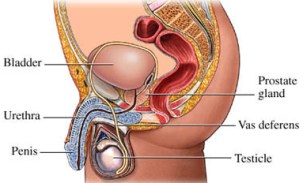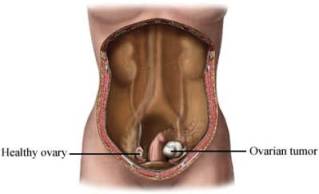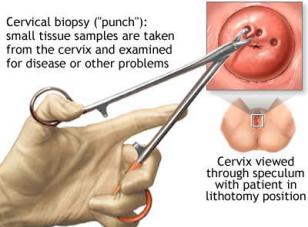Monday, August 17, 2009
Chemotherapy
Labels: Cancer Treatment
Posted by Muhamad Thorik at 4:34 AM 0 comments
Friday, August 14, 2009
Are Your Symptoms Recurrent? Identify Your Genital Herpes Symptoms!
 Genital herpes is a common sexual transmitted disease.
Genital herpes is a common sexual transmitted disease.
Genital Herpes is an infection of the genitals caused by the herpes simplex virus (HSV).
Actually, HSV-1 And HSV-2 are two types of the herpes simplex virus that affects the genitals.
Mostly, HSV-1 cause herpes on the face and HSV-2 causes genital herpes. This virus, usually, enters your body via small breaks in your skin or mucous membranes.
Most of you, usually, when infected with genital herpes will unaware of the virus presence in the body, because you often experience no genital herpes symptoms or mild symptoms that too unnoticeable.
No matter whether you exhibit mild genital herpes symptoms or no symptoms, you are likely to pass the virus to your sexual partner.
In general, the herpes symptoms are known as outbreaks. If genital herpes symptoms develop then they differ greatly from person to person. Normally, the genital herpes symptoms will develop between 2-7 days after exposure to the virus.
Some times, you cannot experience the genital herpes symptoms until months or years after being infected to the simplex virus.
Mostly, the genital herpes infections appear as small blisters or ulcers on the genitals. In general, the first occurrence of genital herpes is known as primary infection. During the primary infection, you may experience a range of very mild genital herpes symptoms.
The symptoms include: low-grade fever, headaches, malaise, generalized muscle aches, decreased appetite, and swollen lymph nodes in the groin or throat. However, these genital herpes symptoms may last for 3 weeks.
In addition to these, you may experience a burning sensation or itching in your genital area. Moreover, you may notice some painful redness or red spots in the areas around your genitals.
Normally, it occurs on both external and internal genitalia. These red spots or painful redness slowly becomes fluid-filled blisters, which then burst leaving you with painful ulcers.
Finally, these ulcers dry off and may take around 10 to 14 days to heal completely. In some rare cases, you may not experience the blisters but only ulcers that looks like small cuts or cracks in your skin.
In general, the most common area that genital herpes affects is vulva (the entrance to the vagina) and occasionally the cervix. Rarely, you may have sores on your buttocks, anus and on top of your thighs. In particular, you feel painful while urinating.
It is not that once your primary genital herpes symptoms disappear, the infection has gone permanently, however the virus may still be present in a nearby nerve, where the virus may be reactivated and passed back down the nerve to the skin. This kind of virus passage is called recurrence.
If herpes recurs in you, then also the genital herpes symptoms will be milder and lasts for very short period, usually 3-5 days because your body has generated antibodies in response to the primary infection, and can now fight more effectively against the virus.
Remember that recurrences, in some cases, may not develop at all. However, if it develops it may last for 6-12 months.
Posted by Muhamad Thorik at 11:23 AM 0 comments
The Sunshine Vitamin: Vitamin D And Your Health
 For a long time we have known how important it is to eat a varied and healthy balanced diet.
For a long time we have known how important it is to eat a varied and healthy balanced diet.
We have also known that a multivitamin and mineral supplement is a good way to make up for any deficiencies in your diet: think of it as a nutritional insurance policy.
One of those vitamins that we may not be getting enough of is vitamin D—may be more important than we knew before.
Up until recently, most people’s opinion of vitamin D was that it was just a vitamin that helped the body use calcium to build strong bones and teeth.
Vitamin D foods play a role in helping prevent depression, skin cancer, multiple sclerosis, and heart disease. It can help your immune system, help with cell growth, and affects your body’s ability to produce insulin. That’s bad news for the nearly 80 percent of all Americans who aren’t getting enough vitamin D.
Many dairy products like milk are fortified with vitamin D. However, most women don’t consume nearly enough servings of low fat dairy every day to meet their needs for this vitamin.
Our bodies can manufacture vitamin D when we are exposed to sunshine, but the amount of sunshine exposure we need for adequate amounts of vitamin D is far too harmful for us to risk.
We’re far more likely to suffer sun damage and risk of skin cancer than we are to get the amounts of vitamin D we need. And if you’re a woman of color, you produce 90 percent less vitamin D because of the increased melanin in your skin. Worse yet, there are very few natural sources of vitamin D.
To get the vitamin D you need, you should take a multi-vitamin and mineral supplement every day that contains 1,000 IU of vitamin D.
Look for supplements that specify D3, the form that is easiest for your body to metabolize. (D2 is derived from plants and harder for our bodies to use.)
If you have a family history of cancer, depression, or heart disease, ask your doctor about running blood tests to measure your levels of vitamin D. Because we know that vitamin D can play an important role in preventing these diseases, your doctor may want you to take higher doses if you are deficient.
Posted by Muhamad Thorik at 11:21 AM 0 comments
Build Bone Density With Osteoporosis Prevention!
 As age progresses, the strength and density of the bone reduces resulting in osteoporosis with porous bone fragility and high risk of bone fracture, particularly in the hip, spine and wrist.
As age progresses, the strength and density of the bone reduces resulting in osteoporosis with porous bone fragility and high risk of bone fracture, particularly in the hip, spine and wrist.
Osteoporosis can strike at any age, but women are at greatest risk after menopause stage.
The National Osteoporosis Foundation (NOF) states that in the United States, over ten million individuals are with osteoporosis.
The researchers estimate that about one out of every five American women over the age of fifty has osteoporosis.
Osteoporosis Prevention
By the age 20, an individual acquires about ninety-eight percent of skeletal mass. Building strong healthy bones during adolescence is the great defensive way against developing osteoporosis in later stages of life.
Osteoporosis prevention and bone health are influenced by several elements including: diet, exercise, healthy lifestyle, and medications.
Osteoporosis Prevention – Diet
The bones in the body continually undergo remodeling (replacing the old with the new). For this to happen, the bone requires specific nutrients:
Calcium – It has been shown to be effective in remodeling as well as building bone mass. To maintain adequate levels of calcium, depending on the age, diet and health conditions, recommended intake ranges between 1000-1500 mg/day.
Good sources of calcium are milk, yogurt, and cheese, dark-green leafy vegetables (spinach, broccoli, and collard greens), almonds, and fortified foods rich in calcium (orange juice, and bread).
Depending on the amount of calcium intake in the regular diet, calcium supplements can be used for bone density and strongness.
Vitamin D – The research on Vitamin D in developing bone density and bone health has been very promising. It plays a vital role in normal absorption of calcium in the body.
It naturally synthesizes in the body from sun exposure. Exposure to the sun for 10-15 minutes thrice a week is recommended.
The recommended daily intake of Vitamin D ranges between 400 to 800 IU (international units). Cheese, fortified milk, butter, egg yolks, liver, fish, fortified cereals and beverages are food sources of Vitamin D.
Depending on the body’s Vitamin D levels, supplements are recommended to maintain adequate levels. Vitamin D-3 is the best Vitamin D supplement for osteoporosis prevention.
Vitamin K – It has been shown to be effective in reducing bone loss. It is an essential element for bone structure. Recommended daily intake of Vitamin K is 90 micrograms (mcg).
Vitamin K is rich in dark green leafy vegetables (broccoli, spinach, collard greens, and brussels sprouts. Vitamin K supplements are also available. With blood coagulation of vitamin K, blood thinners need to check with their doctor prior to increasing its intake.
Osteoporosis Prevention – Exercise
Like building muscle mass, exercises also build bone mass and improves bone health. The odds of having bone fracture associated with osteoporosis also decreases with regular exercises. Weight-bearing exercise is the best for bones, as it impacts more on working against gravity.
Recommended exercises for osteoporosis prevention:
- Weight-bearing exercises – walking, running, jumping, jogging, dancing
- Balancing exercises – yoga, double leg press, exercise ball, tai chi
- Resistance exercises – weight machines, free weights, calf raises, knee flexion, hip flexion, hip extensions, resistance bands
Osteoporosis Prevention – Lifestyle Changes
Smoking
Smoking is injurious to bones. It reduces bone strength and increases risk of bone fractures. It makes calcium absorption less from the diets. Avoid smoking by finding the easy ways to stop.
Alcohol
Excessive alcohol consumption badly affects bones. It leads to bone loss and bone fractures and puts you at risk of falling and bone fragility. Studies suggest that moderate drinking leads to high bone density.
Osteoporosis Prevention – Medications
Continuous use of specific medications can result in unhealthy bones. Glucocorticoids are the medications used for a wide range of diseases such as arthritis and asthma that can lead to a loss of bone density and an increased risk of bone fractures.
Bone Mineral Density (BMD) test determines an individual’s bone density. It also measures the risk of having bone fracture. A regular bone density testing (yearly twice) is recommended for all women over age fifty.
Any changes to the diet, exercise routine, lifestyle habits and medications, for osteoporosis prevention, need to be discussed with the physician for optimum results!
Posted by Muhamad Thorik at 11:13 AM 0 comments
 The most common sexually transmitted disease in the United States is Chlamydia with over one million cases reported every year.
The most common sexually transmitted disease in the United States is Chlamydia with over one million cases reported every year.
If left untreated it can cause permanent damage to a woman’s reproductive organs, exposure to the bacteria will increase a female’s chance of getting the HIV virus by five fold.
For men however there are rarely any complications, although the passing on of the disease through all types of sexual contact means routine testing is a must. Chlamydia can be spread by oral, anal and normal intercourse. The risks are far greater if someone has multiple partners.
Despite increasing numbers being screened the rate is still far too low. Overall in the United States screening is sporadic and often depends on where you live and also the ability to pay for the test. The age range of those most at risk is between sixteen to twenty five.
Awareness is key and it is believed that more could be done within the education system to make young people more accountable for their actions and create a better level of understanding.
Many do not comprehend the seriousness of the infection and the traumatic effect that it can have.
Known as the silent disease, Chlamydia often has no obvious symptoms and if they do occur it is usually several weeks after sexual contact [Chlamydia symptoms]. In recent years rates of screening had increased but for some unfathomable reason this trend is being reversed.
Public service announcements similar to those around the time of the Aids epidemic could be a good way of increasing awareness, which is obviously lacking all round.
Posted by Muhamad Thorik at 10:49 AM 0 comments
HPV Test: The Best Method In Determining The Cervical Cancer!
 Human papilloma virus is a dangerous infection which can cause cervical caner in women.
Human papilloma virus is a dangerous infection which can cause cervical caner in women.
The only way to prevent this virus is having HPV test to be done, which can easily determine the presence of HPV virus in your body.
Generally women above 35 years of age are recommended to have HPV test.
How cervical cancer is related to HPV?
Human papilloma virus is a virus which is mainly responsible for the growth of abnormal cells on the surface of cervix.
There are more than 100 different species of HPV virus in which about five strains mainly cause the cervical cancer.
These group of viruses infect your body and causes genital warts. The most common way of identifying the HPV infection is genital warts. These warts can be very small, depending on the severity of the infection.
Mostly these viruses are not active and long enough to cause the infection. On the other hand, if the HPV virus is of high risk type, then it can lead to cervical cancer by developing abnormal cells on the cervix.
HPV test shows better results than Pap Smear test
HPV test is more accurate and effective in determining the cervical cancer and other genital warts. It uses advanced technology in determining the presence of HPV virus in your body and easily detects the cervical cancer.
In recent study, it has been proved that Pap smear test is not as accurate as HPV test in determining the cervical cancer. The use of Pap test has considerably reduced by the occurrence of cervical cancers. In fact, one third of all cervical cancer results are due to the pap detection failure.
How can you protect yourself from HPV virus?HPV virus is a contagious infection which can be transmitted through direct contact with the infected person. It doesn’t show any particular signs and symptoms till it turns into severe form.
Some of the necessary prevention tips are given here which protect your self from this dangerous virus.
- The best way to avoid this viral infection is limiting the sexual contacts with multiple persons and regular check up with HPV test.
- Avoid using things of other persons like clothes, towels etc.
- Maintain good diet and drink lots of water. This can improve your immune system and helps your body to fight against all of such dangerous viruses.
- Daily exercise is also helpful in keeping your body to build its own immune system and keeps your body healthy and fit.
Posted by Muhamad Thorik at 10:47 AM 0 comments
Rates Of Cervical Cancer Rising Among Childs
 Bad news for teenage girls: while rates of cervical cancer are going down in women over 25, among 15 to 19-year-olds, rates are rising year on year.
Bad news for teenage girls: while rates of cervical cancer are going down in women over 25, among 15 to 19-year-olds, rates are rising year on year.
Jillian Birch, at the University of Manchester, UK, and her colleagues examined national cancer incidence data and looked specifically at young people aged 15 to 24.
They noticed that between 1979 and 2003, the incidence of cervical cancer had increased by 1.6% per year. When they examined the data more closely, they found that people aged 15 to 19 were driving that increase, with the rate going up 6.8%, Birch told the Teenage Cancer Trust’s fifth international conference in London today.
Previous studies indicate that most women who get infected with the virus contract it in their teens or early 20s. But while many women are simply able to clear the virus, and others develop a slow-growing cancer decades later, when cervical cancer appears in young women it can develop rapidly.
Posted by Muhamad Thorik at 10:46 AM 0 comments
Wednesday, August 12, 2009
Study Says Few Birth Control Pills Are Safe
 Recent studies in Denmark and Netherlands determines that some birth control pills are safer than other and neither studies received any funding from companies that manufacture oral contraceptives.
Recent studies in Denmark and Netherlands determines that some birth control pills are safer than other and neither studies received any funding from companies that manufacture oral contraceptives.
European researchers say that the composition of woman’s birth control pills influences her risk of developing deep vein thrombosis.
Earlier studies already made it clear that oral contraceptives, which contain estrogen and progesterone, increases the risk of blood clots in lungs and leg and also leads to pulmonary embolism.
Pills containing a second-generation progestogen — levonorgestrel or norgestrel — and a low dose of estrogen are safest, they concluded.
The overall risk of venous thromboembolism is low, perhaps three for 10,000 woman-years for women in general, said Dr. Ojvind Lidegaard, a professor of obstetrics and gynecology at the Rigshospitalet in Copenhagen, and lead author of one of two reports.
Posted by Muhamad Thorik at 11:38 AM 0 comments
Tiny Ovarian Tumors Hard To Detect
 Researchers reported in a study that tiny ovarian tumors exist unobserved in fallopian tubes for an average of four years before they grow large enough to be detected and therefore the diagnosis of those tumors comes too late to save a woman’s life.
Researchers reported in a study that tiny ovarian tumors exist unobserved in fallopian tubes for an average of four years before they grow large enough to be detected and therefore the diagnosis of those tumors comes too late to save a woman’s life.
The researchers said as the cancer is hard to detect before it has spread, they are finding ways to improve the cancer testing.
Howard Hughes Medical Institute researcher Dr. Patrick Brown of Stanford University in California, who led the study, said in a statement, “Reliable early detection can save more lives than many new anticancer drugs”.
Ovarian cancer kills 140,000 women every year globally and 15,000 in the United States alone. Genetic mutations are known to raise the risk, but most patients do not have a clear genetic risk, and no good screening test exists.
Source: Reuters
Posted by Muhamad Thorik at 11:32 AM 0 comments
Cone Biopsy – Best Method In Detecting Cervical Disorders!
 Are you suffering with cervical disorder or cervical cancer?
Are you suffering with cervical disorder or cervical cancer?
Cone biopsy is the surgery which will help in removing the tumors which are responsible for cervical disorders.
Cervical cancer is the common problem for most of the women. It mainly shows its effect on your reproductive system.
Cone biopsy is an extensive method of cervical biopsy.
In this method, a piece of tissue which is cylindrical in shape is taken for the diagnosis of the cervical cancer. Small tumors in the cervix can be removed with cone biopsy.
Cone biopsy is generally recommended for two main purposes:
- It is used to take the thin or thick sample tissues inside the cervix, which is needed for diagnosis of the cervical cancer.
- It is also used for the treatment of some abnormal tissues or tumors present inside the cervix, which does not need any long term treatment or surgeries to be removed.
Cone biopsy is usually done in either of two given ways:
- LEEP, loop electrosurgical excision procedure is one of the surgical methods of cone biopsy, in which the tissue is removed with the help of an electric wire, heated with an electric current. In this method of surgery, you will be given only with local anesthesia and it is a quick process which can be done at your physician’s office.
- Cone biopsy using laser technology is another method of removing the tumors from the cervix. In this method, CO2 laser is used to remove the abnormal tissues. In this method, you will be given with general anesthesia. Using lasers is always advantageous, as there will be no bleeding process involved when it is done with the lasers.
Important tips to be followed after cone biopsy:
- After the surgery, you need to take rest for one to four hours and also special instructions are given to take care of yourself after the surgery is done.
- You can find some vaginal bleeding for about a week after the surgery, which is quite normal and also some vaginal spotting for up to three weeks.
- Avoid sexual intercourse and use of tampons for four to six weeks.
There are certain complications involved with this cone biopsy. Before going to have this surgery, you need to know about these things which can cause harm to you.
- After surgery, you may need blood transfusion or vaginal packing. This happens very rarely. About only 10% of women or less than that suffer with this problem.
- The cervix can be turned narrow which leads to infertility.
- Due to the lack of ability of the cervix to remain closed during pregnancy, your pregnancy may end up with miscarriages or even premature babies.
Try to discuss with your doctor about these complications before having this surgery in order to avoid the disasters to happen.
Posted by Muhamad Thorik at 11:30 AM 0 comments
Women Who Have Had Breast Cancer Should Avoid Alcohol
 Any woman who has had cancer in one of her breasts is at risk for developing cancer in the second breast.
Any woman who has had cancer in one of her breasts is at risk for developing cancer in the second breast.
A new study suggests drinking alcohol may increase this risk of breast cancer by 30 percent.
The longer the women in the study had been users of alcohol, the more likely they were to develop cancer in the second breast.
There are may factors that influence the risk of breast cancer that are beyond women’s control, including gender, age, genetic risk factors, density of breast tissue, onset of menses, late menopause, and family and personal history of breast cancer.
African American women are at greater risk for dying from breast cancer, although more cases of breast cancer occur in white women. Risk factors for breast cancer that women can control are breastfeeding their children, maintaining a healthy weight, exercising regularly, and now, keeping alcohol consumption to a minimum.
The standard screening test for breast cancer is a mammogram. A woman should have her first mammogram procedure at the age of 40 unless there are risk factors that indicate beginning screening earlier. Women with a family history of breast cancer may wish to consider genetic screening as well.
Posted by Muhamad Thorik at 11:29 AM 0 comments
Tuesday, August 11, 2009
HIV, National Women And Girls Awareness Day
 Each year thousands of women worldwide are infected with the HIV virus, this is particularly true amongst black women between the ages 19 to 35, who do not understand the importance of protecting themselves during a sexual relationship with their male partners.
Each year thousands of women worldwide are infected with the HIV virus, this is particularly true amongst black women between the ages 19 to 35, who do not understand the importance of protecting themselves during a sexual relationship with their male partners.
In March, there will be a national day dedicated to HIV and AIDS alertness, organised throughout the U.S. in order to bring more information to all those women who still do not understand how important it is to protect themselves from the virus.
During the National Women and Girls Awareness Day, there will be the possibility to have HIV screening tests and collect as much information on the virus as possible.
It is essential that all women abstain from unsafe sex or use a condom every time they have sex with a partner they do not know well enough.
Unfortunately there are also cases of regular partners who in turn have unsafe sex with other infected people, thus spreading the virus to those who do take precautions; this is why one must be tested regularly.
These tests available to all women will help them find out if they are infected, and if so they may be treated at an early stage and be helped to keep healthy.
It is also important to be aware of your state of health in order not to spread the disease, should you be infected by the virus.
Pregnant women receive the HIV screening test during their first visit at the parental care and during the period of their gestation; this should be so for all women, whether or not they are expecting a baby, they should be offered regular tests as part of a regular health plan.
Posted by Muhamad Thorik at 11:39 AM 0 comments



